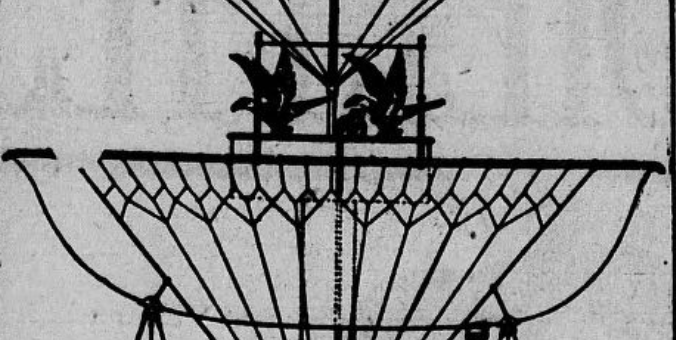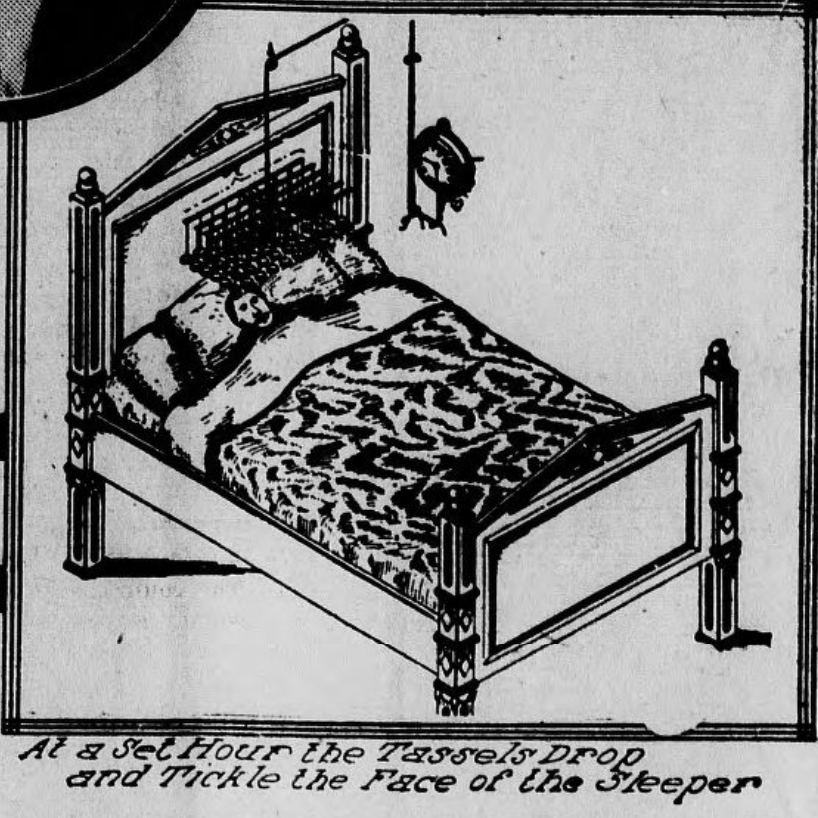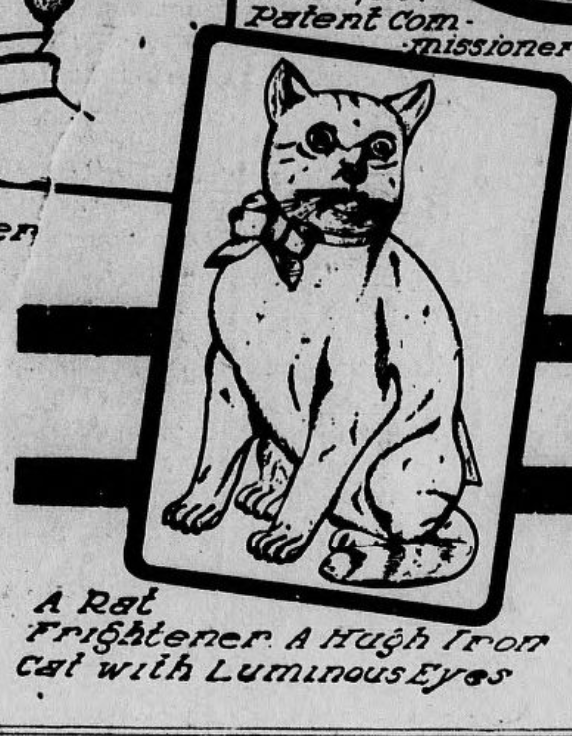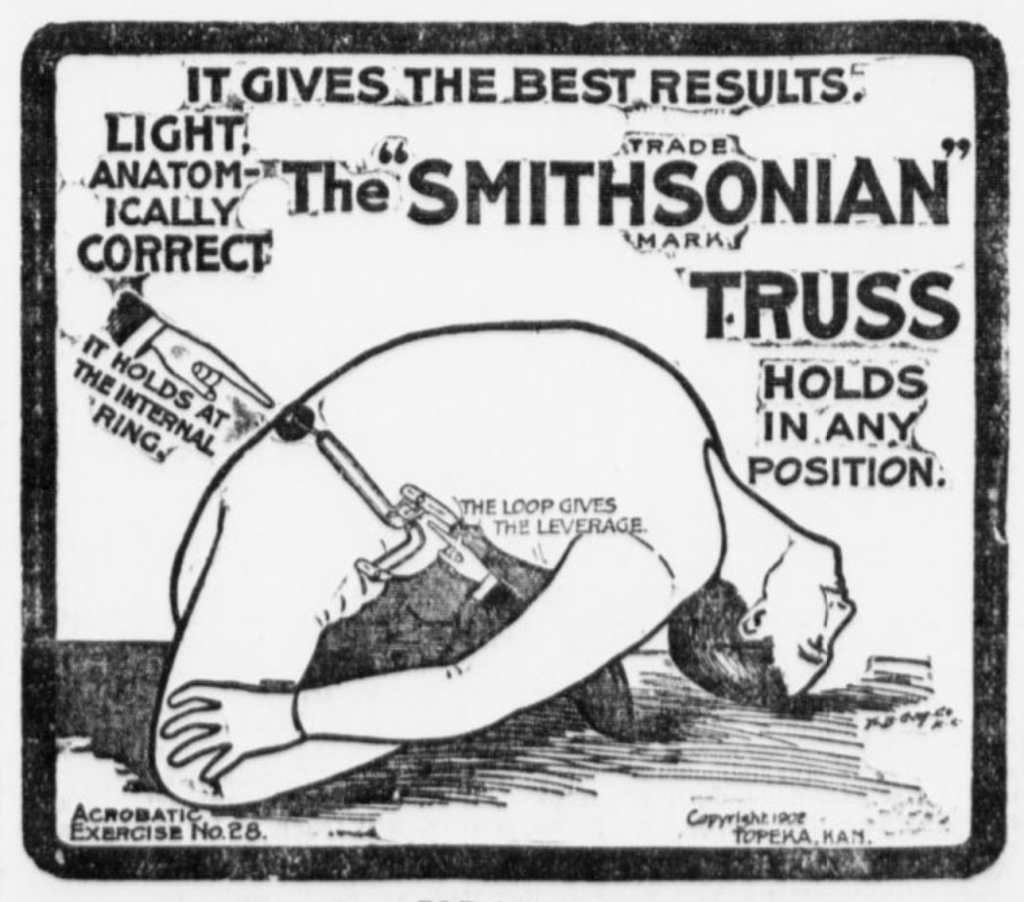
Below is a fascinating article published in 1912 that covers the origin and history of the US patents office and ends with a bunch of strange inventions that were on the books over 100 years ago.
A truly fascinating read.
Some Curiosities of the U.S. Patent Office

Although the United States is the youngest nation, her citizens lead the world in inventive genius, for already more than one million patents have been issued in this country, while the total number of patents granted by all the foreign countries combined up to the present time is only a little over a million and a quarter.
Origin of Patents
Patents are of Anglo-Saxon origin and England was the first country to issue them. This occurred during the reign of King James I, and the first one recorded shows that it was granted on March 11, 1617, to Aaron Rathbone and conveyed to him the exclusive right to make a survey of the City of London and divers places within the Kingdom of England. The royal license gave Rathbone the right to restrain by force other persons from infringing upon his privilege.

The second patent granted was the occasion of the beginning of the curious features of a patent office and one that would not likely receive the approval of the public at present. This patent was granted to protect his Royal Majesty from caricatures, and was given to Nicholas Hillyard, who had the exclusive right to make pictures of the king.
Other patents followed in quick succession and were given to persons who stood high in court circles or who paid officials large sums to secure favors for them. Monopolies were obtained by many favorites, thereby enriching a few at the expense of the many, so after all graft and the trusts are older than the American republic.
This continued for several years, the king exercising his prerogative as to patents to suit his fancy and in this way rewarding his favorites at the expense of the public.
At last the people rebelled at this unjust discrimination and protests began to pour in from every quarter of England, and parliament was forced by public opinion to take action. After much discussion and debate that august body passed a patent law and favoritism through the grace or whim of the king ended.
Patents in the United States

The first resident of the American colonies to obtain letters patent under this law was Thomas Masters, of Philadelphia, who in 1716 was granted a patent on a machine for “cleaning and curing corn.”
Few persons living in America at that time applied for patents, and it was not until the United States became a republic that the inventive genius of our countrymen began to display itself to any great extent.
In the early years of our republic the President signed the letters granted, and the first one so far as can be traced was known as a device for making pearl ashes, and the letters granting it were signed by President George Washington.
The year 1836 marked a new era in the protection of inventions in this country, when all previous laws were repealed and a new one was passed.
In 1849 the patent work was transferred to the newly created department of the interior and a commissioner of patents placed at its head. Since that time patents of every conceivable kind have been issued. Some of them which seemed both absurd and useless at the time they were invented in late years have become very valuable, especially when perfected by subsequent improvements. For instance, the pneumatic tube was patented in 1845, but did not come into use until many years later.
During the early years of the patent office, when skilled mechanical draughtsmen were not as plentiful as they are at present, a model of each invention was required, but since 1880 no models have been received, drawing being preferred. This is required for two reasons. First, because the average business man prefers a good drawing to a small model; second, because of the great space required to keep them.

All patents must be the patentee’s own discovery or invention and must be a thing which can be used for a lawful purpose. Before a patent is refused a thorough examination is made of all patents of its class both in the United States and foreign countries and thorough search in the library on the subject, and if a prior patent is found the new applicant is refused. This usually leads to an interference, which is a proceeding in the nature of a law suit instituted in the patent office to try the question of the priority of the invention of the applicant and the patentee.
After a series of examination and hearings before the patent examiners and chairman of interference, during which testimony is introduced from all parts of the world, it finally comes to the patent commissioner, who sits as a judge on such cases, and whose decision is final so far as the department is concerned. After this the case usually finds its way to the court of appeals and half of the business of that body is taken up by patent cases.
Fifteen dollars must be sent with the application for a patent, and twenty dollars upon its allowance. The “allowance” is not a grant of a patent and the applicant does not become the patentee until he has paid the final fee and his letters have been actually issued.
These fees represent but a small item in securing a patent. The plans and specification must be absolutely correct and sometimes have to be written several times, for the granting of a patent is to encourage invention and to give people an opportunity to improve on useful articles, and if a single point is withheld the patent will not be allowed.
These specimen drawings must be the work of an experienced draughtsman and must be put before the examiners in a proper manner. This requires the aid of a patent attorney who, of course, must be paid for his work.
The life of patents varies in different countries, and in the United States it runs for seventeen years and an extension can be obtained only through an act of congress.
Most Expensive Patent
The most expensive patent in the history of the office was issued in 1895 and was granted on an intricate machine for distributing, setting, and justifying type. For eight years the application was pending, and when it was finally turned over to the examiners there were one hundred and sixty-three sheets of drawings.
The specifications were twice rewritten, each time by a different attorney.
It is estimated to have cost the inventor at least a million dollars before it was completed. The late Mark Twain was interested in the patent and is said to have contributed one-fourth of the cost. The examiners spent six weeks in studying the case before taking action.
After the letters were granted, the work of preparing copies (as is the rule with all patents) began, and the first edition of Patent No. 547,860 cost the government $3.28 per copy. These had to be sold to the public for five cents each, as specifications of any intention may be purchased at that price after the patent has been granted.
People began to order copies of the patent out of mere curiosity and the edition was soon exhausted and never renewed.
Strange Inventions
Going through the records of the office, one is surprised at the number of simple and seemingly foolish articles which have been patented. For instance, an elaborate drawing of a ball known as a “feline exerciser” is on record. One would supposed that a cat gets enough exercise on the backyard fence, but this is probably intended for prize cats that are not allowed to roam. If consists of a ball filled with Tony holes. The ball opens with a self-closing spring and is intended to be filled with catnip. The feline gets exercise by rolling the ball about in the vain attempt to get at the catnip. It is said that the inventor of the “feline exerciser” realized considerable profit from his curious invention.

Perpetual motion is the subject of many patents, as are devices for waking sleeping persons. Drawings of alarms of many kinds fill several cases in the patent office, but perhaps the most unique is the one arranged in such a way that if the sleeper does not arise a few minutes after being awakened the bottom of the bed drops out and throws its occupant into an uncomfortable position making sleep impossible.
Another is so arranged that at a certain hour tassels drop down on the face of the sleeper and tickle him until he arises.
A time lock tobacco box was patented several years ago. It was designed to break a man of the tobacco habit. At a certain time each day the box opens and no more tobacco can be obtained.According to the patentee, it should be set earlier each day and in this way the user will gradually give up the use of the weed.
Devices for saving people from premature burial are numerous, and in one of these, by means of a cord, the prematurely buried person may arise a red flag over his grave, and in another he touches a spring which lights a light on the top of the grave, and by another patent the supposed dead person may ring a bell for help or climb a ladder which reaches to his coffin.

A rain coat with a gutter all around the bottom and a spout in the back was patented in the early 1860s.
There is a mechanical hat-tipper which relieves the wearer of lifting his arm to raise his hat when a lady passes. He merely touches a button inside his coat. This is connected with a mechanism inside his hat, which when set in motion by pressing the button raises the gentleman’s hat in a most polite fashion.
The anti-snorer is a simple arrangement fastened on the chin which keeps the mouth closed during the night.
A Pennsylvania man has the patent right of a lantern to be fastened to one’s shoes for use on dark nights.
Another patentee has devised a baseball catching machine – an attachment fastened in front of the catcher – which opens automatically when the ball strikes it. The ball is removed through a hole in the bottom.
Twenty years ago a Frenchman was granted a patent on a peculiar apparatus for propelling and guiding balloons. This was undoubtedly the forerunner of the flying machine.
The photographic passenger recorder specifications cover several pages of printed matter and is a device whereby a picture is made of every person passing into a public hall – a sort of crude moving picture machine and patented many years before anything was known of the motion picture art.
The needs of the farmer are not overlooked, as there are various apparatus to prevent hens from setting, one of which is a hood to keep her from looking up at the nest.
An instrument for “extracting skippers from cheese” is on record. This is accomplished by exhausting the air and causing the skippers to drop dead and fall into a pan under the cheese.
These are but a few of the thousands of curious inventions registered in the patent office at Washington – patents which were expected to bring fame and fortune to the patentees. Men and women in all walks of life have shown inventive genius, and they came from all parts of the country.
Source: The Daily Missoulian. (Missoula, Mont.), 22 Sept. 1912.

